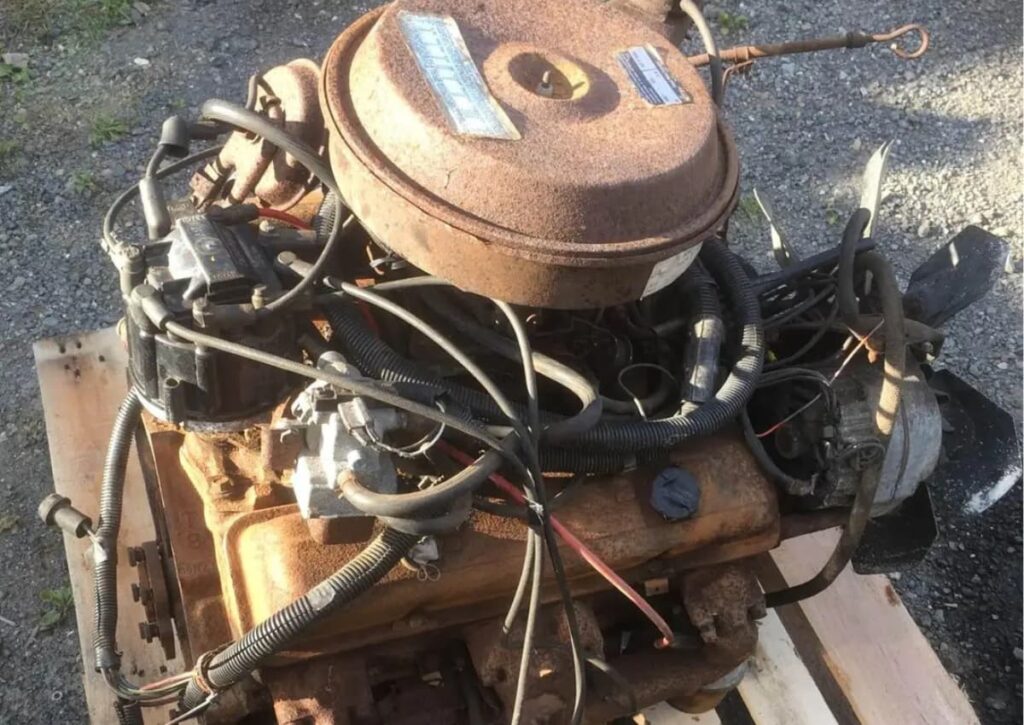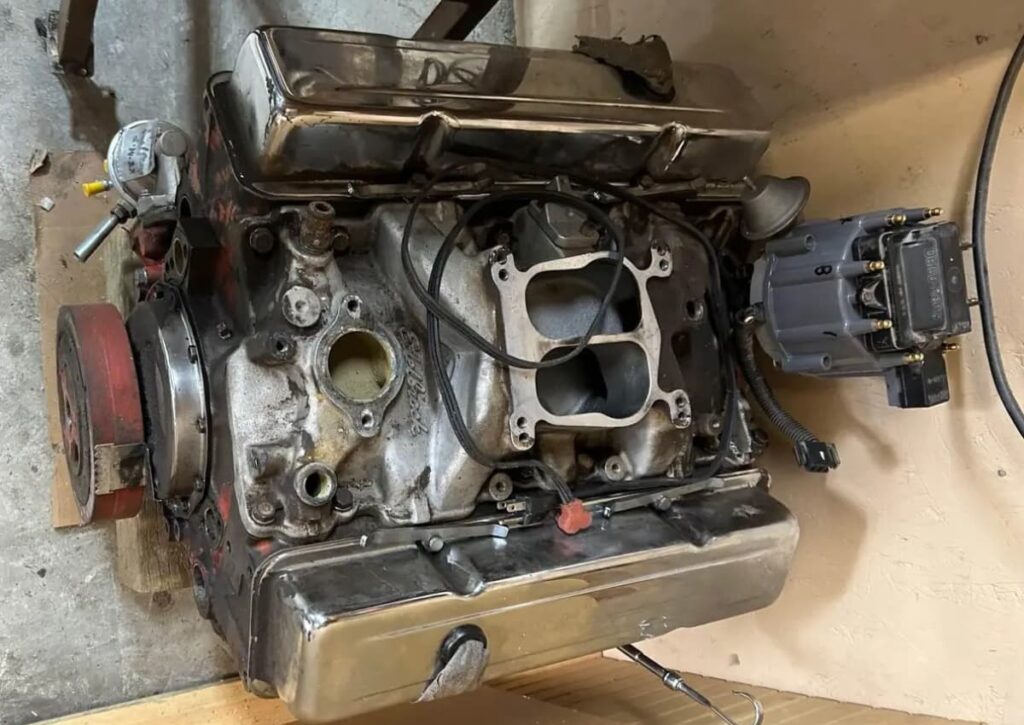If you’re a classic American muscle car enthusiast, you’ve probably heard about the Chevy 400 and 350 engines. They’re small block engines that have earned a reputation for their performance, versatility, and cost-effectiveness. Whether used in trucks or passenger vehicles, these engines will improve safety and driving experience.
Unfortunately, choosing one engine over the other can be tricky. The two share a similar block design, among other commonalities. However, the two engines have several key differences you should consider before purchasing.
This guide will compare the chevy 400 small block vs 350 engines to help you find the better option. But first, let’s briefly discuss the two small block engines.
Chevy 400 Small Block
The Chevy 400 small block engine came into existence in 1970 and continued until 1980. It was the biggest small block engine in its family, thanks to its 400 cubic inches displacement. It was a high torque but low-performance engine designed for the Chevy’s light-duty trucks and bigger passenger vehicles.
The engine had a similar overall design as its predecessors, although with various internal differences. Over time, various modifications to the 400 small block made it gain popularity as a powerful engine. The engine produced gross horsepower ratings of up to 265hp, although its net ratings were at 150hp.
The Chevy 400 is known to generate more torque at a lower RPM. As a result, the engine is suitable for SUVs and pickup trucks.
Besides torque, you’ll love the Chevy 400 small block due to its iron casting. This material makes it a sturdy engine that will last for decades.
Consumers can choose between the 2-barrel carburetor and the 4-barrel carburetor engine. The Chevy 400 with a 4-barrel carburetor is known for greater performance.

Chevy 350 Small Block
The Chevy 350 is one of the most popular and widely used small block V8 engines. Chevrolet introduced this engine in 1967, and it powered millions of vehicles until 2002.
Thankfully, the 350 small block is still available from General Motors as a crate engine. It’s still famous among classic car lovers due to its power and performance. Moreover, consumers love this small block engine due to the readily available parts from GM and many automotive parts manufacturers.
The engine had a similar cylinder block design as its predecessors.
Despite its 350 cubic inches displacement, the Chevy 350 small block generated outstanding power and torque. The engine’s horsepower ranged from 125 to 370 hp. Its horsepower varied depending on the make, model, and manufactured year.
Regarding torque, this engine delivered a maximum torque of up to 380 lb. ft. You can, therefore, use it for daily driving.

Answer: Chevy 400 Small Block vs 350: Comparison
This table shows the differences and similarities between Chevy 400 and 350 small block engines.
| Features | Chevy 400 Small Block | Chevy 350 Small Block |
| Production years | 1970-1980 | 1967-2002 |
| Horsepower | 265 HP | 125-370 HP |
| Displacement | 400 | 350 |
| Engine capacity | 6.6 L | 5.7 L |
| Torque | 330 lb. ft. | 380 lb. ft. |
| Bore | 4.18” | 4.0” |
| Stroke | 3.75” | 3.48” |
| Main journals | 2.65” | 2.45” |
| Block | Cast iron | Cast iron |
| Weight | 200 | 195 |
Let’s examine how the Chevy 400 small block engine differs from the 350.
Displacement
A notable difference between the 400 and 350 engines is displacement. The Chevy 400 small block has a larger displacement (400 cubic inches) than the 350 small block (350 cubic inches). That means their engine capacities are 6.6 and 5.7 liters, respectively.
Both have similar dimensions as their predecessors, measuring roughly 28 x 26 x 27. The identical measurements enabled the interchanging of these engines across many GMC cars and trucks.
Power Output
The Chevy 400 small block was a high-torque small block engine with a low RPM. It generated 265 horsepower to power midsize trucks and passenger vehicles. It achieved this gross horsepower rating due to the longer stroke and 2/4-barrel carburetor.
The Chevy 350 is a higher RPM small block engine, depending on the model. The engine produces horsepower ranging from 125 to 370. It also generated 380 lb. ft. of torque, higher than the Chevy 400 small block.
Therefore, the Chevy 350 small block is a higher-performance engine than the 400. This engine powered high-end classic vehicles such as the Camaro and Corvette.
Internal Components
The Chevy 400 small block has a larger bore and stroke than the 350 engine. It’s worth noting that the engine’s bore and stroke significantly influence the displacement and engine’s performance. The 400 small block features a bore of 4.18 inches and a stroke of 3.75 inches.
On the other hand, the 350 small block has a bore of 4.0 inches and a slightly smaller stroke of 3.48 inches.
The larger bore size in the 400 engine required Siamese-type cylinders to ensure no circulation of water and coolant. This configuration allowed the engine to deliver more power through the cylinders. Unfortunately, the engine was more likely to overheat and blow the gaskets.
The conventional cylinders in the Chevy 350 allowed coolant to pass between the cylinders. The engine had better cooling efficiency to maintain optimal engine temperatures. As a result, 350 engines performed better under varying operating conditions and minimized the chances of overheating.
The Chevy 400 small block had 2.65-inch diameter main journals, larger than the 2.45-inch main journals in the 350 engine. This made it impossible to interchange the main caps on the two small block engines.
Head Gaskets
The Siamese-type cylinders on the Chevy 400 small block increased the chances of overheating and gaskets blowing. To prevent this, the manufacturer incorporated “steam” holes on the head gaskets to reduce hotspots in the cooling system.
The “steam” holes minimized overheating to prevent damage to the head gaskets and other components.
On the other hand, Chevy 350 head gaskets didn’t feature the “steam” holes. The engine maintained an optimal operating temperature thanks to the cooling efficiency. As a result, the head gaskets were not at a great risk of blowing out.
Answer: Pros and Cons
This 400 small block vs 350 section examines the pros and cons of each engine.
Pros of the Chevy 400:
- Ideal for high-performance applications like heavy-duty towing and drag racing.
- Allows an increased airflow due to the larger displacement and bore, resulting in higher power output.
- It’s versatile and can power various light-duty trucks and passenger vehicles.
- The iron casting makes it a durable engine.
Cons of the Chevy 400:
- Less fuel efficient due to a larger displacement.
- Repair parts are not readily available. This engine has unique cylinders and larger main journals uncommon in automotive workshops.
Pros of the Chevy 350:
- It has an efficient cooling system that reduces the chances of engine overheating.
- It’s a versatile engine used for daily driving and street performances.
- It’s a durable engine, thanks to its iron casting.
- Repair parts are readily available in automotive workshops. Besides, you can interchange Chevy 350 components with many small block engines.
Cons of the Chevy 350:
- Its smaller displacement makes it less suitable for heavy-duty towing.
Cars that Used the Chevy 400 and 350 Engines
Below are some of the popular cars that used these small block engines.
Chevy 400 small block: Chevrolet Chevelle (1970-1972), Chevrolet Caprice (1970-1976), and Chevrolet Monte Carlo (1970-1976).
Chevy 350 small block: Chevrolet Camaro (1967-2002), Chevrolet Impala (1969-1985), Chevrolet Corvette (1969-1996), Chevrolet Chevelle (1969-1973), and Chevrolet Nova (1969-1979).
Verdict
Hopefully, this Chevy 400 small block vs 350 engine comparison guide will help you choose a better option. Both engines have several similarities, but they differ when it comes to dimension, horsepower, and torque.
Overall, your choice depends on your unique needs and preferences. If you’re looking for a reliable engine for your daily driving or street performances, choose the Chevy 350. However, if you want a powerful engine for heavy-duty tasks, go for the Chevy 400 small block.